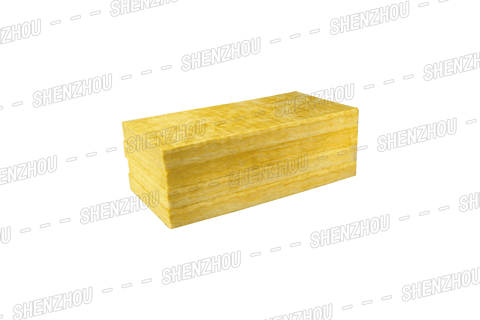
What is the difference between ceramic wool and rockwool?
6/14/20245 min read

Ceramic fiber and rock wool are two common insulation materials in the industrial field, which have significant differences in performance, use, and production process. Below, we will explore in detail the main differences between ceramic fibers and rock wool.
Firstly, from the perspective of material composition and characteristics, ceramic fibers are mainly made from high-purity inorganic materials such as alumina and silica through melting and fibrosis processes. It has excellent high temperature resistance and antioxidant properties, and can maintain stable physical and chemical properties in high-temperature environments. In addition, ceramic fibers also have good insulation performance, low thermal conductivity, and small heat capacity, making them widely used in high-temperature furnaces, aerospace, chemical and other fields.
Categories
Popular
Applications of Glass Wool Board:
Interior Wall Compartments:
Enhances the functionality and aesthetics of interior spaces.
Ceiling Systems:
Provides effective insulation for ceilings, contributing to energy efficiency.
Insulation of Iron Sheet Air Ducts or Bellows:
Ideal for insulating ductwork, ensuring thermal efficiency.
Sound Absorption and Noise Reduction:
Reduces noise levels in machine rooms, creating a quieter working environment.
Exterior Wall Insulation:
Offers insulation for residential building exteriors, contributing to energy savings.
Glass Wool Insulation





In contrast, rock wool is mainly made from natural rocks such as basalt and dolomite, and is processed by high-temperature melting and fibrosis. Rock wool also has good thermal insulation performance, but due to differences in its raw materials and production processes, its high temperature resistance and antioxidant performance are slightly inferior to ceramic fibers. In addition, rock wool also has certain sound absorption and noise reduction functions, making it widely used in the field of building insulation and sound insulation.
Secondly, in terms of usage, ceramic fibers are often used as insulation materials for high-temperature furnaces, such as ceramic kilns and glass kilns, due to their excellent high-temperature resistance. Meanwhile, in the aerospace field, ceramic fibers are also used to manufacture components such as thermal protection structures and insulation layers due to their lightweight and high-strength characteristics. And rock wool is more widely used in the construction field, such as external wall insulation, roof insulation, etc., to improve the insulation performance and energy-saving effect of buildings.
Finally, from the perspective of production technology, the production process of ceramic fibers is relatively complex, requiring high-precision melting and fibrosis equipment as well as strict process control. The production of rock wool is relatively simple, mainly relying on high-temperature melting and fibrosis technology. This also makes the manufacturing cost of ceramic fibers relatively high, but their excellent performance makes them irreplaceable in specific fields.
In summary, there are significant differences between ceramic fibers and rock wool in terms of material composition, characteristics, applications, and production processes. The choice of material mainly depends on the specific application scenario and requirements. In situations where high temperature and antioxidant performance are required, ceramic fibers are a more ideal choice; In the fields of building insulation and sound insulation, rock wool is favored due to its good cost-effectiveness and wide range of applications.

Why Choose SHENZHOU Glass Wool Board?
SHENZHOU® Glass Wool Board not only meets the essential requirements of thermal insulation but also excels in sound absorption and noise reduction. Its adaptability to various settings, coupled with the convenience of construction and installation, positions it as a leading choice for architects, builders, and contractors.
In conclusion, the broad application prospects of SHENZHOU® Glass Wool Board make it a comprehensive solution for enhancing comfort, energy efficiency, and acoustic performance across diverse projects. Choose SHENZHOU® for insulation solutions that go beyond expectations.










About Us
Click the button below to get more information about us
Newsletter
Click to subscribe for more information
Follow Us
Contact Us
Address
Dacheng town, Langfang City, Hebei province, China
Phone
+86 185 03165 626


